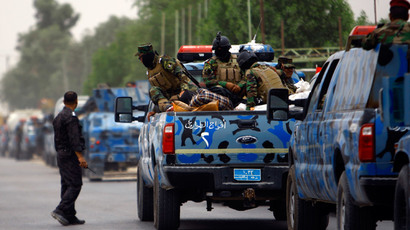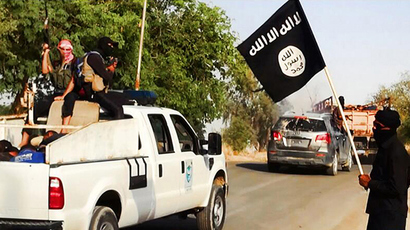All you need to know about ISIS and what is happening in Iraq
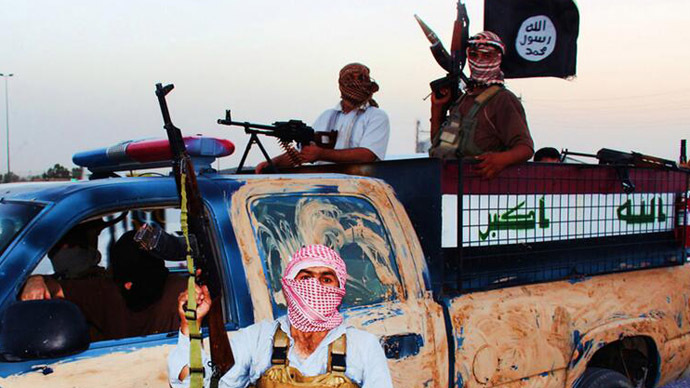
As ISIS, a group thought to consist of only a few thousand people led by a shadowy figurehead, defeats forces many times its size to capture a large part of Iraq, RT looks into what is ISIS, and how has it achieved its terrifying triumphs.
Follow RT's LIVE UPDATES on ISIS offensive in Iraq
So, what is ISIS? And is it even ISIS, or is it ISIL?
The world’s most committed and fanatical radical organization has only recently gone by its current name, after the unrecognized Islamic State in Iraq and al-Sham (ISIS) was proclaimed in April last year. Al-Sham has been most commonly translated from Arabic as the Levant, hence ISIL. It was previously known as Jama'at al-Tawhid wal-Jihad, Al-Qaeda in the Islamic State of Iraq.
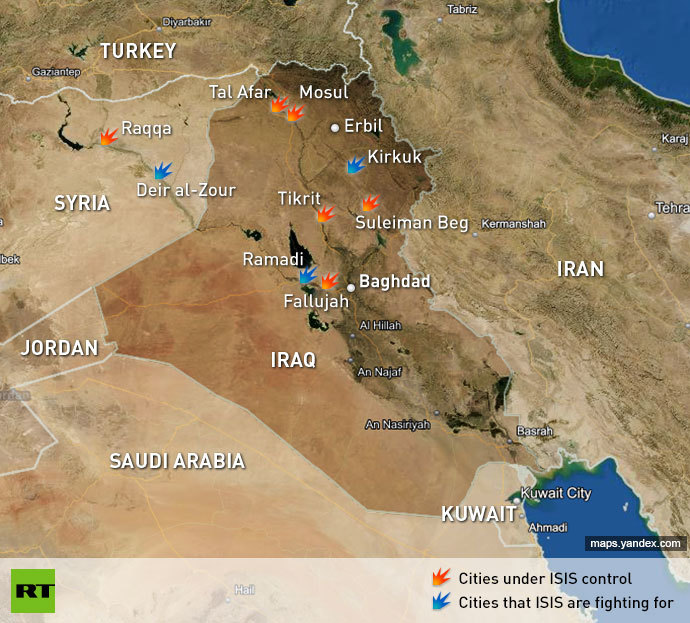
The frequent name changes are not cosmetic – but the direct result of the transforming circumstances which have allowed ISIS to rapidly flourish. Initially focused on achieving dominance in Iraq, it was kept under control in the relatively calm period between the initial sectarian strife that broke out following the US-led invasion in 2003, and the outbreak of hostilities following the American military withdrawal in 2011.
Since then, it has become a major player, receiving another critical boost when the civil war in Syria turned into a sectarian conflict, bringing in millions of dollars in funding and thousands of fresh recruits from around the world.
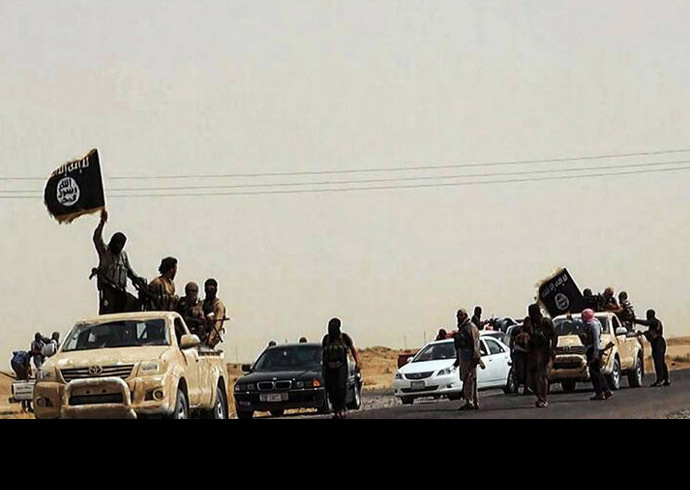
Currently, ISIS strongholds extend from Raqqa in northern Syria all the way down to the outskirts of Baghdad – a stretch of more than 500 km, though the group doesn’t have comprehensive oversight of the roads and settlements between them.
The speed with which the Islamist group is closing in on Baghdad can be compared – if not exceeds – the pace of the 2003 invasion. Unlike the US and allies, though, ISIS does not have a capability of launching destructive air strikes, however in its latest offensives the group has reportedly managed to significantly boost its military power capturing dozens of US-made armored vehicles and other heavy weaponry from the retreating Iraqi military.

ISIS is part of and similar to Al-Qaeda, right?
No, it is significantly worse. Al-Qaeda has been the touchstone for the Western understanding of terrorism ever since 9/11, but ISIS differs from it philosophically, organizationally, and even officially, as it has declared itself an entirely separate body. If anything the two organizations – though both espousing Sunni Islam – are currently more rivals than allies.
While Al-Qaeda, in its most well-known forms, is a terrorist organization, with sleeper cells, training camps and terrorist attacks, ISIS as of now is more a militia and a rogue territory with its own infrastructure, more similar to Boko Haram and other localized fiefdoms that have spawned in lawless or failed African states.
Al-Qaeda has become more conscious of avoiding acts of indiscriminate or counter-productive brutality since the demise of Osama Bin Laden, but ISIS revels in it, espousing a religious philosophy so uncompromising it appears almost nihilistic.
The areas it has secured have been kept under control by an endless stream of floggings, mutilations, beheadings and crucifixions. The targets can be well-chosen or arbitrary, but no one is spared – Shia opponents, Sunni rivals, captured soldiers or “immoral” women.
ISIS 'execute' 1,700 Iraqi soldiers, post gruesome pictures (GRAPHIC)
Unsurprisingly, although the first leader of ISIS, the late Abu Musab, did swear fealty to Al-Qaeda back in the early 2000s, the two organizations have fallen out.
The breaking point was the internecine fighting between ISIS and Al-Qaeda-backed Nusra in Syria. Pleas by Al-Qaeda to divide spheres of influence were flatly rejected by Abu Bakr, the ISIS leader, who spent four years in US captivity, before being released in 2009. After increasingly testy communication between the sides, Al-Qaeda “disowned” ISIS earlier this year, in return provoking ISIS to call the organization “traitors” and “a joke.”
With the rise of ISIS, many say that it is now Al-Qaeda’s Ayman al-Zawahiri who should be pledging allegiance to the 43-year old Abu Bakr.
How is ISIS funded?
ISIS operates as a half-mafia-style commercial enterprise, half pious international charity, looking for wealthy donors in the Gulf States and throughout the globe.
It is certainly not lacking in opportunism in commercializing its military activities. In 2012 ISIS – or ISI as it was then – took over oil fields in Syria, reaping profits from selling the oil at discounted prices to anyone willing to pay. It has traded in the raw materials in areas it has captured, and even dabbled in selling antiques from monuments under its control.
#ISIS annual report “al-Naba” – Report – includes infographic of 2013 attacks 4"stakeholders" #Iraqpic.twitter.com/VeHtsZQnMQ MT @WilliamsJon
— The Power Of One. (@france7776) June 18, 2014
Sometimes, it doesn’t have to be so elaborate. Its biggest single success was plundering a government vault in Mosul – captured last week – that reportedly contained more than $425 million. With the loot taken during its recent advances, ISIL’s estimated war chest now stands at over $2 billion.
But just as important is ISIS income from its unknown – yet easily guessed – backers from the Arabian Peninsula. As the world’s foremost proponents of Saudi-style Wahhabism, Iraqi officials claim ISIS gets a steady stream of funds and support from politically engaged operators, working from the safety of Saudi Arabia’s and Qatar’s US-protected borders.
Like any up-and-coming enterprise, its recent publicity and burgeoning reputation is likely to form a virtuous circle, where ISIS will receive additional funds, to wreak more impressive feats of destruction to the delight of its backers.
How did ISIS manage to capture so much territory?
On June 10, less than a thousand of ISIS militants on soft-shelled pickup trucks occupied the northern Iraqi city of Mosul with a population of 1.8 million people.
The city was supposed to be under the protection of the US-trained Iraqi military force of about 30,000 stationed in the region. It was equipped with sophisticated US-made military equipment – part of the weaponry and hardware supplied by Washington to Baghdad, which has been estimated to cost billions of US dollars.
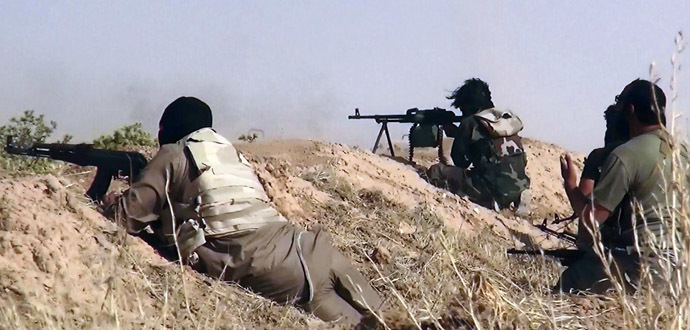
However, Mosul fell with no apparent resistance as scores of Iraqi troops fled dropping their uniforms and leaving the precious hardware behind. The militants celebrated getting US-made Humvees and tanks – some of which have since headed to Syria to be used against the government forces – and even allegedly captured at least one Black Hawk helicopter.
General lack of morale and cohesion in the Iraqi army has been named the cause for the humiliating loss of this and other cities – including the strategic city of Tal Afar close to the Syrian border and Saddam Hussein’s birthplace Tikrit.
Aiding this parade of ISIS victories has been the allegedly sweeping support of the local Sunni population, who previously supported the Sunni regime of Saddam Hussein overthrown by the US-led forces.
Sectarian factors, but also the way the post-invasion Iraqi PM Nouri al-Maliki’s government has handled religious and social conflicts in the country, certainly contributed to Iraqi army being unpopular in ISIS-occupied regions. Apparently, replacing some Sunni commanders with Shiites locally did not help, and the way ISIS won the support of local tribes via negotiations has shown how little the new central government is valued in northern rural Iraq.
However, one also has to realize that ISIS is no bunch of poorly-trained extremist thugs. With years of experience on the Syrian battlefield, the group boasts training camps producing well-prepared fighters, and it has been joined by scores of professionally trained overseas mercenaries.
ISIS spokesman Shaykh Muhammad Adnani has explained the group’s current success by the will of God, saying that “the [Islamic] State has not prevailed by numbers, nor equipment, nor weapons, nor wealth, rather it prevails by Allah’s bounty alone, through its creed” in a recent statement posted on YouTube.
It remains unclear for how long the brutal and repressive policies of ISIS will guarantee their support on the ground in Iraq, while they are trying to win the locals’ hearts with religious propaganda and dreams of a huge cross-border caliphate.
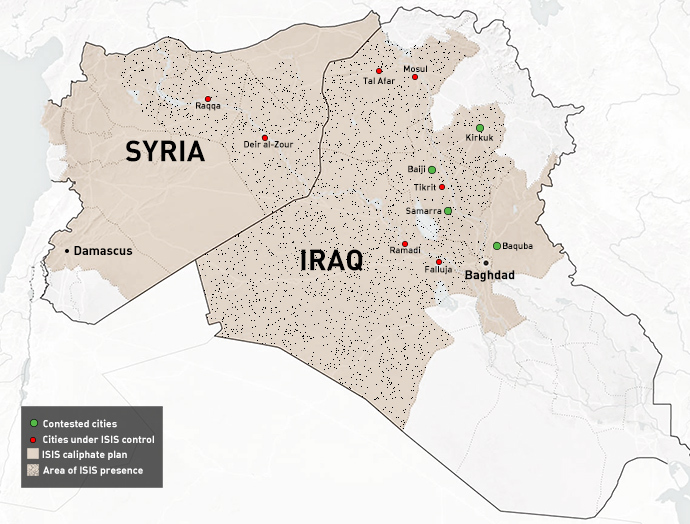
It is ironic that the hardcore Islamist group will be using the equipment provided by Washington to Baghdad in the Western-backed insurgency in Syria, but at the same time may be confronted by the West in Iraq, where the militants are now contesting the country’s largest oilfield.
Battles with militants in Iraq play out near oil fields, pipelines, refineries. Here's a map. http://t.co/Au3frzhmMBpic.twitter.com/GWM8cDWlLj
— Seth Hamblin (@Seth_Hamblin) June 13, 2014
Having spent billions on Iraq and war on terror for securing its own interests in the region, the US and its allies have been unwilling to admit the devastating 2003 invasion was a mistake with disastrous consequences for the whole Middle Eastern region. While 2013 was marked by the bloodiest sectarian violence in Iraq in five years, it mostly went unnoticed with the “international community.” Recently, the former UK Prime Minister Tony Blair chose to blame“bad systems of politics mixed with abuse of religion” as the root of all the problems in Middle East.













